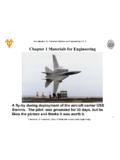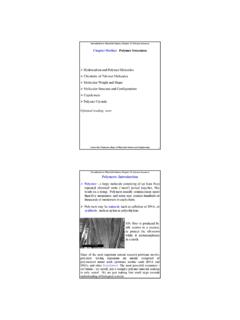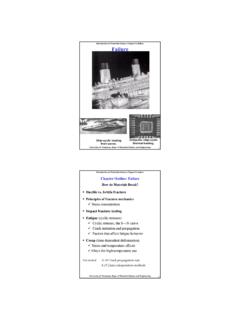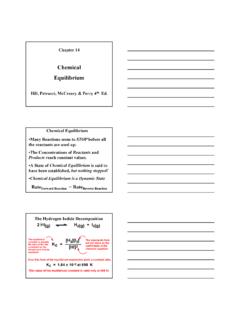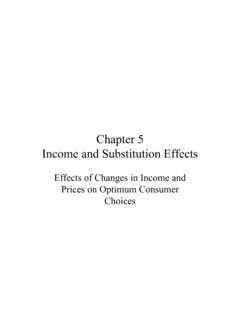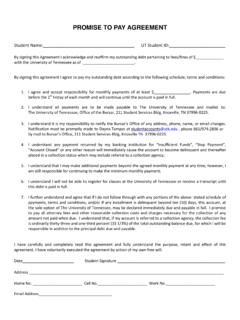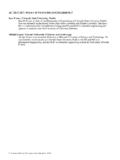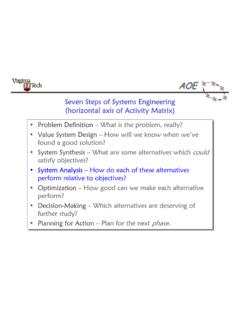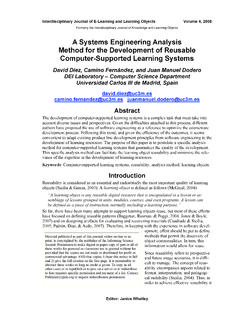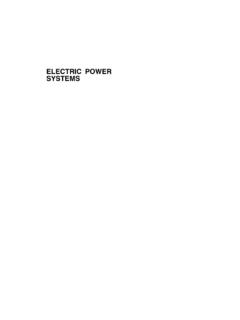Transcription of Reliability Engineering
1 11 Reliability Engineering2 Reliability Engineering What is Reliability Engineering ? Role of Reliability Engineering (Technical Support) Reliability Engineering Activities Maintenance Prevention LCC analysis Proactive Maintenance (FPA, RCFA, Specification forNew/Rebuilt Equipment, etc.) Capital Equipment Replacement Economic Evaluation/Justification analysis in R&MInvestments Other Analytical Techniques for Improvement Elements of a Reliability Improvement System23 What is Reliability ? The Reliability of an item/ system is the probability that theitem/ system performs a specified function under specifiedoperational and environmental conditions at and throughout aspecified time.
2 Quantitatively, Reliability is the probability ofsuccess. Usually expressed as Mean Time Between Failures(MTBF) A collection of planned activities (established through formaland informal management systems) that are effectively workingtogether to prevent loss of system function. This second definition is a managed approach to maintain thereliability of system functions. Both definitions refer to thesystem and maintaining the functionality of the system4 Definitions Maintainability: The ability of an item, under stated conditions ofuse, to be retained in, or restored to, a state in which it canperform its required function(s), when maintenance is performedunder stated conditions and using prescribed procedures andresources.
3 Expressed as Mean Time To Repair (MTTR). Availability: Is the probability that a system is available for useat a given time- a function of Reliability and maintainability. It isoperating time divided by load time, which is the available timeper day minus the planned downtime. Failure: The termination of the ability of an item to perform itsrequired availability considers only corrective maintenance in anideal support environment (with neither administrative nor equipment is in a failed state it is no longer available forwork, and its Reliability decreases. As the length of time in afailed state (downtime ) increases, the maintainability of theequipment AvailabilityA = MTBFMTBF + MTTRi6 Emerging Strategies for MaintenanceManagementEquipment Effectiveness and Reliability19301940195019601970198019902 000 Repair after failureInspect, lubricatePreventive MaintenanceSystematic planning and schedulingPredictive MaintenanceDiagnosticsReliability EngineeringConcurrent Engineering Operator MaintenanceSource: Uptime, Productivity is Reliability Engineering ?)
4 Focuses on eliminating maintenance requirements. Utilizes technology analysis to achieve Reliability andmaintenance task improvements. Improves the uptime and productive capacity ofcritical equipment using formalized problem-solvingtechniques8 Important Aspects of ReliabilityEngineering1. Current knowledge of predictive, analytical, and compliancetechnologies, and the ability to apply these techniques to add value tothe The adaptation and application of concepts such as TPM and The development and implementation of a proactive M&R plan(s) toeliminate maintenance requirements, minimize the use and costs ofreactive maintenance, maximize the benefits of PM and PdM, andachieve increasing levels of integrated asset The ability to lead or technically support multidisciplinary During design, advises other engineers on Reliability (prediction)
5 For theirsystems and tactics to improve Reliability such as redundancy, partsderating, Failure Mode and Effects analysis , During design, participates in trade-off studies amongperformance, cost, and Reliability . Reliability estimates are a keyinput to Life Cycle Costing (LCC)7. During development, continues to update Reliability predictionsand prepares Reliability test During pre-production, verifies Reliability of subsystems andentire system through various types of testingImportant Aspects of ReliabilityEngineering (Cont.)10 What do Reliability Engineers Do? Maintenance Prevention Optimizes equipment life-cycle costs by using life-cycle costing(LCC) analysis Employs proactive techniques to extend machinery life: Failed-part analysis (FPA).
6 Root-Cause Failure analysis (RCFA) Adapts Total Productive Maintenance (TPM), ReliabilityCentered Maintenance (RCM) and other concepts to theoperating environment Provides specifications of new/rebuilt equipment Develops plans and analysis of capital equipment (and otherassets) replacement Involvement in the economic evaluation/justification ofinvestments in M&R611 FabricateequipmentMaintenancefreedesignC ommision-ingcontrolOperationTest runInstallequipmentStudies toreducemaintenanceworkPlan inspectionInspectDecision tomodifyPlanmodificationworkModification workWorkacceptanceMaintenancePreventionP lanned MaintenanceInspectionresultsWork orderMaintenance dataReport feedback formaintenance-free designMaintainability &methods improvementMaintenance workprocedure improvementsMTBF analysis , cost estimation1.
7 Design/Installation Stage2. Operation/Maintenance StageModel for Maintenance-Free Equipment DesignSource; TPM by Nakajima12 Maintenance PreventionEquipment ManagementProject EngineeringMaintenance EngineeringMaintenance PreventionThe goal of maintenance prevention (MP) is to reduce maintenance costsand deterioration losses in new equipment by considering past maintenancedata and the latest technology when designing for higher Reliability ,maintainability, operability, flexibility, safety, and other and installing equipment that will be easy tomaintain and operate713MP Objectives Reduce the time taken from the design to stableoperation Accomplish the transition efficiently with minimumlabor and a balanced workload Ensure that equipment is designed to be highlyreliable, maintainable, economical, operable.
8 Andsafe Minimize future maintenance costs and deteriorationlosses of new equipment MP design process improves equipment Reliability byinvestigating weaknesses in existing equipment andfeeding the information back to the Prevention (MP)Ideally, MP-designed equipment should not break down orproduce out-of-spec products. It should be easy and safe design activities are subject to the following constraints: Technology (production and equipment technology) Quantitative and qualitative equipment capacity Basic equipment specifications Capital budget Operating costs (operator labor, raw materials yields,maintenance costs, energy costs, etc.)
9 815 Early equipmentmanagement(cost control)Operation and maintenance(cost reduction)BusinessPlanningEquipment investment planning(cost planning)Plan equipmentinvestmentCompile equipmentinvestment budgetsSet specifications, basic design,rough cost estimateCost standardsInvestmentevaluation criteriaEvaluate investmentRecord ofinvestmentevaluationDesign anddebugFabricate &debugInstall, testrun & debugCommission & debugDesignstandardsOperation & & efficiency improveMeasurementaccuracyProductquality EnergyefficiencyProductionoutputTakemeas urestoIncreaseoperability& reliabilityReduceequipmentbreakdownsIncr easeMaintain-abilityRationalization measures(equipment development & modifications)
10 Outside technical information MP designEquipmentimprovementEvaluation of equipment investmentEquipmentTechnologyOutline16 Maintenance Prevention (MP) Maintenance prevention activities are conducted during the stagesof: Equipment design Fabrication Installation and test run Commissioning ( establishing normal operation withcommercial production) Include debugging at each stage ( detecting and correctingerrors and malfunctions) Production and maintenance departments must join forces with thedesign department to form a project centered engineeringdepartment. What if a supplier is developing your new equipment? How canMP be established under that Prevention (MP) The team will examine possible problems at each stage of MPdesign with respect to the following issues: Quality Productivity Operability Energy-saving Cost Maintainability Safety and environment Aim is to front end load maintenance improvements so thattroubles (repairs, inspections, adjustments, lubrication, cleaning,tightening) during start-up and commissioning are minimized.
